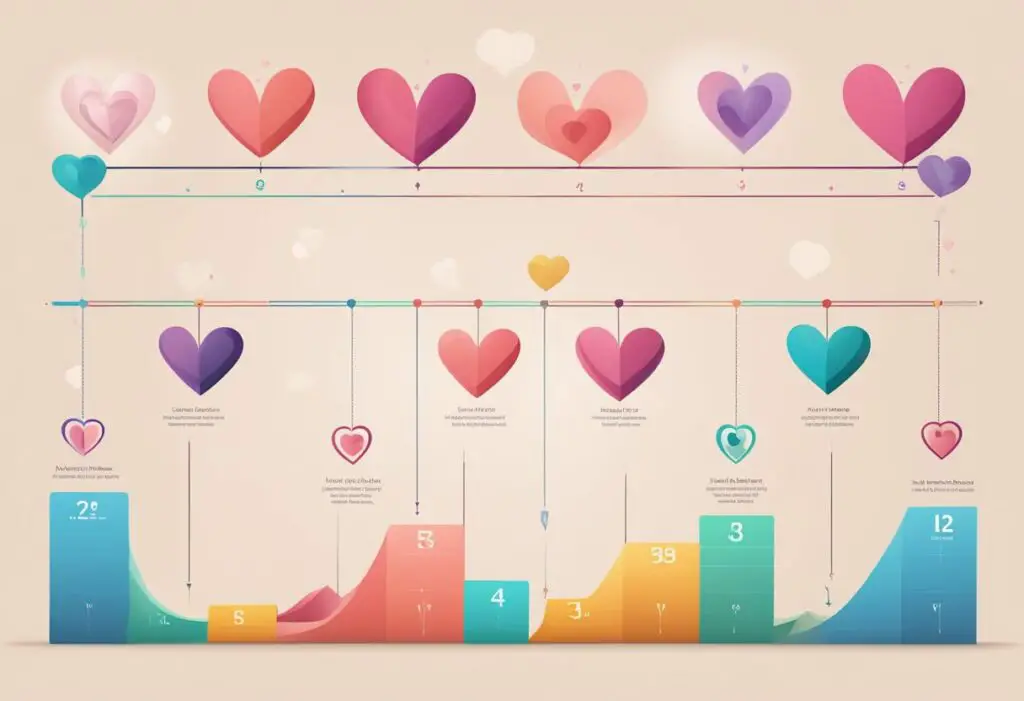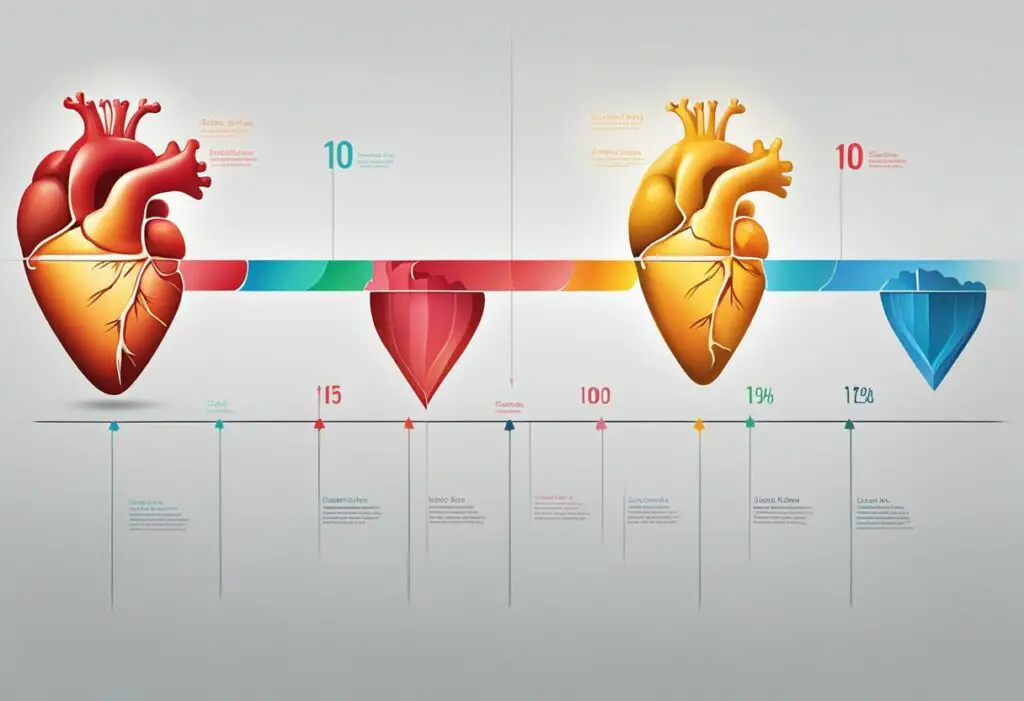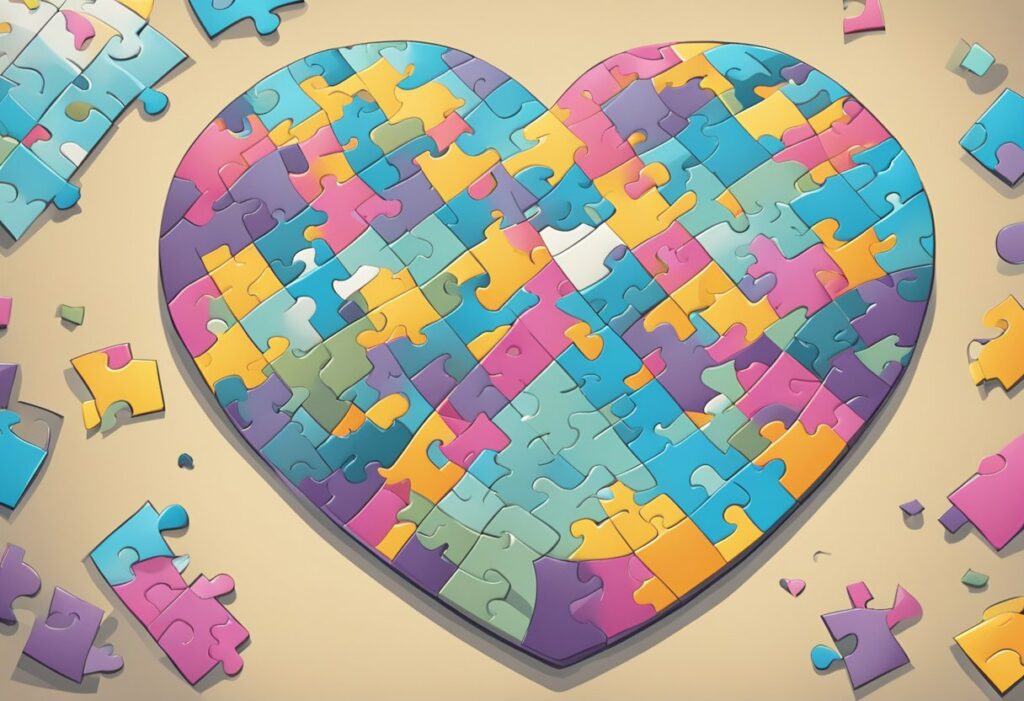The Timeline of Affection: Understanding Crushes Versus True Love

Understanding the intricate nature of human emotions can be challenging, particularly when differentiating between the intensity of a crush and the depth of love. These experiences, while distinct, share common beginnings — a fascination and a fondness for another person.
A crush typically emerges as an intense yet short-lived infatuation with someone, often characterized by a strong desire for the person’s attention and an idealized perception of them. It is marked by a sense of excitement and preoccupation with the individual, frequently accompanied by nervousness and a rush of emotions.
In contrast, love is a more enduring and profound emotion, one that develops over time through shared experiences and a deepening of mutual understanding and acceptance. It is more than just a fleeting feeling; love encompasses a commitment to another’s well-being and a partnership that thrives on support and trust.
While a crush is often rooted in physical attraction and surface-level admiration, love builds on a foundation of connection that goes beyond the superficial, involving a deeper recognition of another’s qualities, imperfections, and values.
Defining Crushes and Love

In exploring the timeline of affection, it’s crucial to understand the differences between crushes and love, each marked by distinct characteristics and emotional experiences.
Early Stages of Affiliation
A crush typically emerges quickly, characterized by an initial infatuation that may seem intense but is usually short-lived. Individuals in this phase might experience:
- A heightened sense of excitement when thinking about the person of interest
- An idealized perception of the other person, often overlooking flaws
On the other hand, love develops more gradually, forming deep connections over time. Key signs include:
- A desire for a lasting relationship, beyond surface-level attraction
- Increased comfort and security with the individual, allowing for vulnerability and sharing personal thoughts
Chemical and Emotional Indicators
The distinction between crushes and love can also be traced to specific chemical responses in the brain. For example:
| Emotion | Associated Chemicals |
|---|---|
| Crush | Dopamine, Norepinephrine |
| Love | Oxytocin, Vasopressin |
Emotionally, crushes often involve heightened anxiety and anticipation, manifesting as:
- Nervousness or butterflies when near the person
- Frequent daydreaming about potential interactions
Contrastingly, love is marked by a steady presence of affection and commitment, seen in behaviors like:
- Consistently prioritizing the partner’s needs and happiness
- Experiencing a sense of empathy and concern for the partner’s well-being
Development Over Time

The progression of romantic emotions varies from individual to individual, but they generally evolve from initial attraction to deeper connection. The journey can be marked by significant changes in emotional intensity and commitment.
Transition from Crush to Love
In the early stages, a crush is characterized by heightened curiosity and idealization of the other person often based on limited information and interactions. It is a surface-level attraction that can feel intense but is usually brief and can be fleeting. Here’s how the transition might occur:
- Intensity: The intensity of a crush can fade as two individuals get to know each other, making way for a more balanced and realistic view of the other person.
- Depth: As they spend time together, the initial superficial attraction may develop into a deeper emotional connection.
Maturation of Romantic Feelings
Love, distinct from a crush, is marked by a profound and enduring affective connection with another person. It encompasses the following developments:
- Emotional Investment: Love involves a deeper emotional investment that includes both accepting flaws and embracing mutual growth.
- Commitment: Over time, love typically matures into a stable bond, displaying resilience in the face of challenges and a mechanism for mutual support.
Both sections reveal a gradual increase in vulnerability, shared experiences, and mutual understanding, which are essential for the transition and maturation of feelings from crush to love.
Identifying Key Milestones

In understanding the progression from crushes to love, it’s important to recognize specific phases that signify the evolution of one’s feelings and the maturation of a relationship. The following subsections illuminate these critical points.
Reciprocity and Commitment
Reciprocity is when both individuals involved acknowledge their mutual attraction and decide to explore the potential of a relationship. They typically demonstrate this by:
- Expressing feelings: verbally or through actions that show they value each other.
- Spending time together: scheduling regular dates or meet-ups to strengthen their connection.
Commitment emerges as the pair chooses to be exclusive or makes plans for the future. They exhibit commitment through:
- Defining the relationship: having a discussion about the status and expectations.
- Making joint decisions: considering each other’s opinions in life choices.
Deepening Intimacy
Emotional intimacy advances as individuals share personal thoughts, experiences, and vulnerabilities. Indicators of deepening intimacy include:
- Trust: being open about fears and desires without fear of judgment.
- Support: providing emotional sustenance during challenging times.
Physical intimacy often intensifies alongside emotional ties. However, the depth of physical intimacy can vary widely among relationships and doesn’t necessarily equate to love. It is marked by:
- Affectionate gestures: such as holding hands, hugs, and kisses that convey warmth and closeness.
- Desire: a longing to be physically close that’s respectful of both partners’ boundaries.
Challenges and Resolutions

In the journey of distinguishing between crushes and love, individuals often encounter confusion and challenges. Resolving these matters calls for introspection and communication.
Navigating Uncertainty
Uncertainty often arises when one’s feelings are not clearly defined as either a crush or love. They may experience a mix of intense admiration and deep emotional attachment without clarity.
- Identification: Recognizing whether the feelings are fleeting or enduring can help clarify emotions.
- Crush: Often characterized by an idealized and short-lived fascination.
- Love: Tends to involve a deeper, long-term emotional connection.
- Steps to Resolution:
- Reflect on the consistency and depth of emotions.
- Evaluate the impact of the other person’s presence in one’s life.
- Discuss feelings with trusted friends or a counselor for perspective.
Overcoming Obstacles in Relationships
Over time, obstacles such as misunderstandings, communication breakdowns, and differing expectations can challenge the bond between individuals, whether in a phase of crush or love.
- Communication: The cornerstone of resolving relationship challenges is open and honest dialogue.
- Establish regular check-ins.
- Share feelings and expectations without blame.
- Conflict Resolution:
- Listen actively: Ensure understanding before responding.
- Express clearly: Use “I” statements to convey personal feelings and needs.
